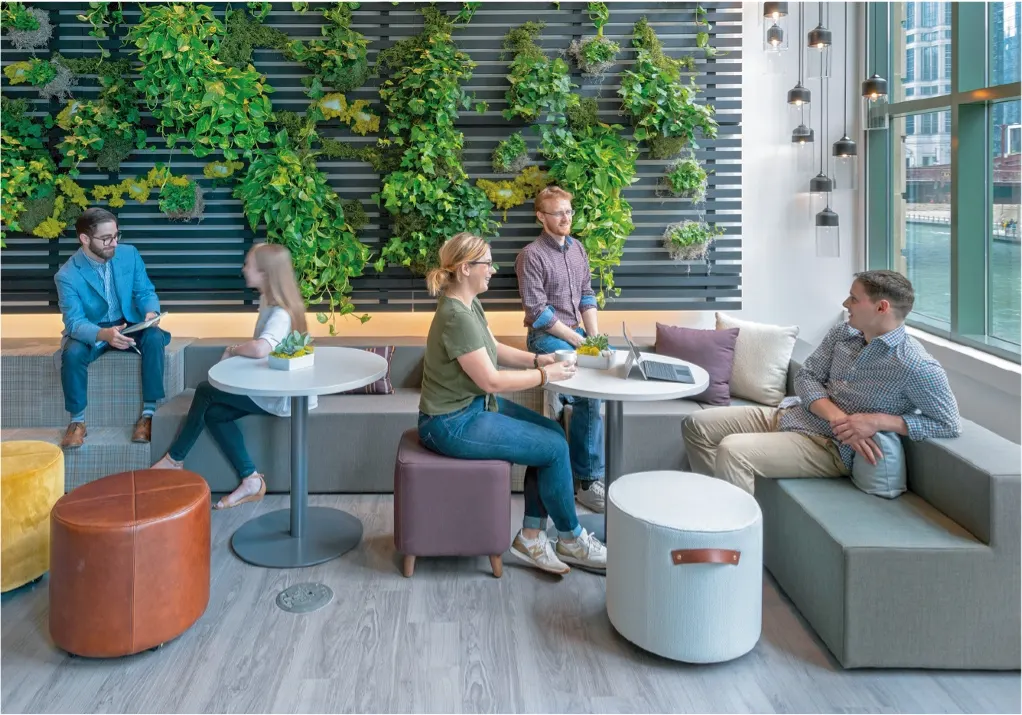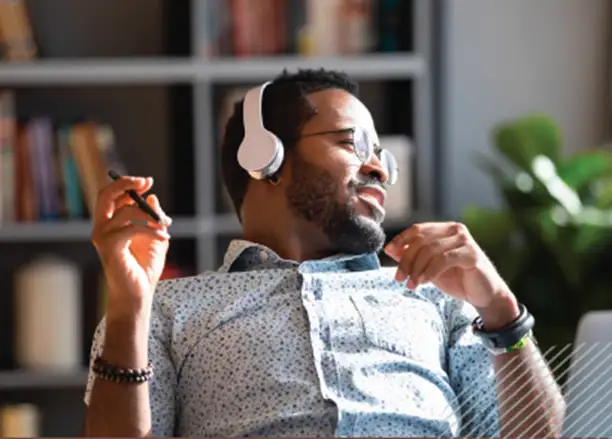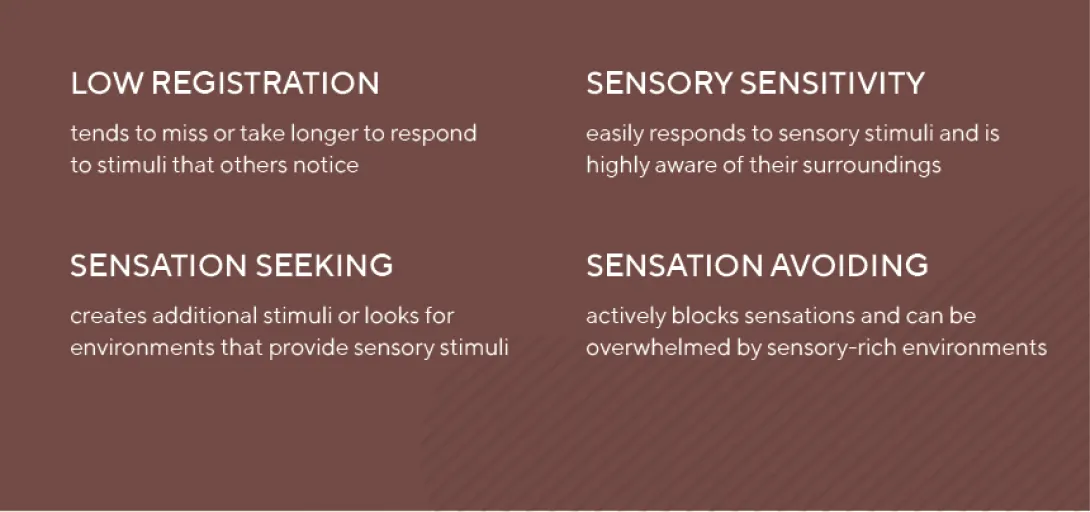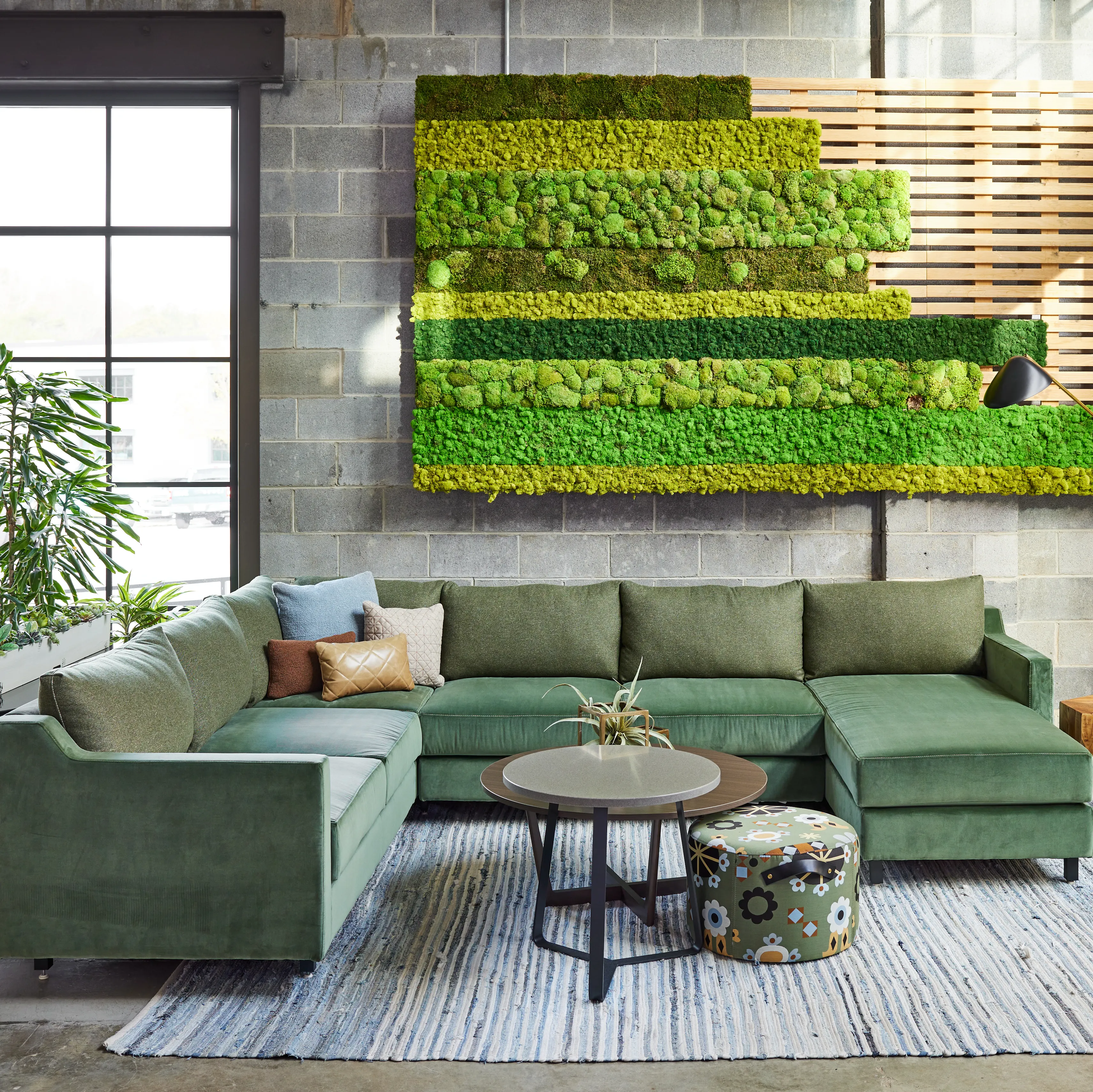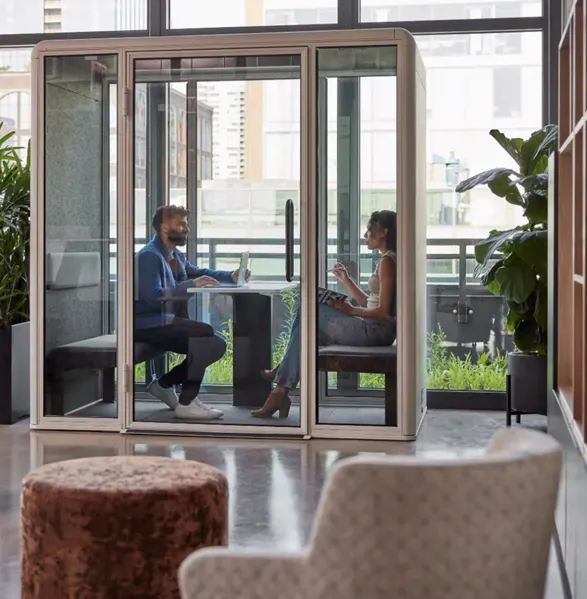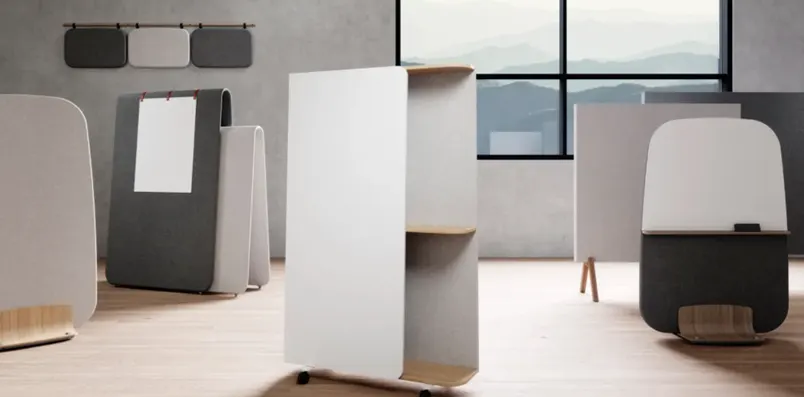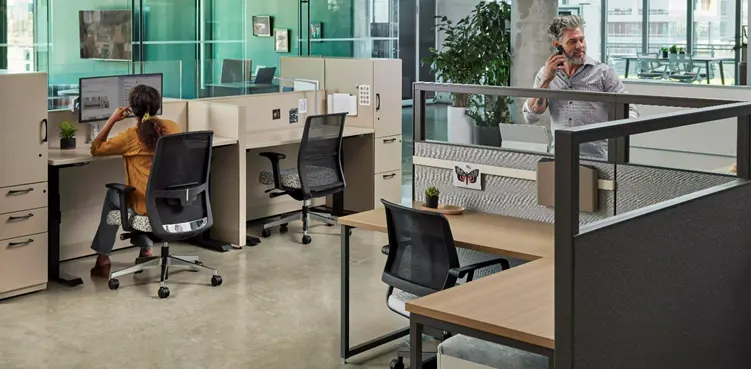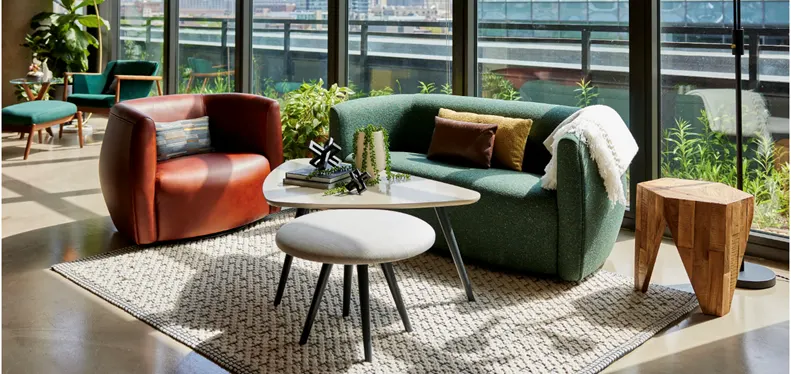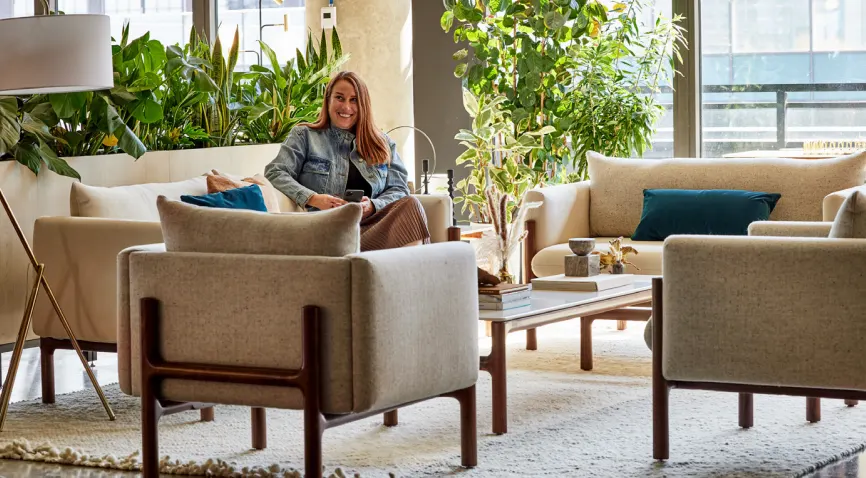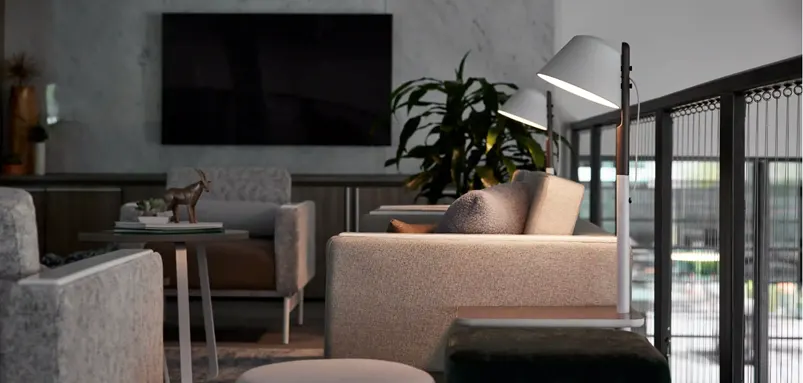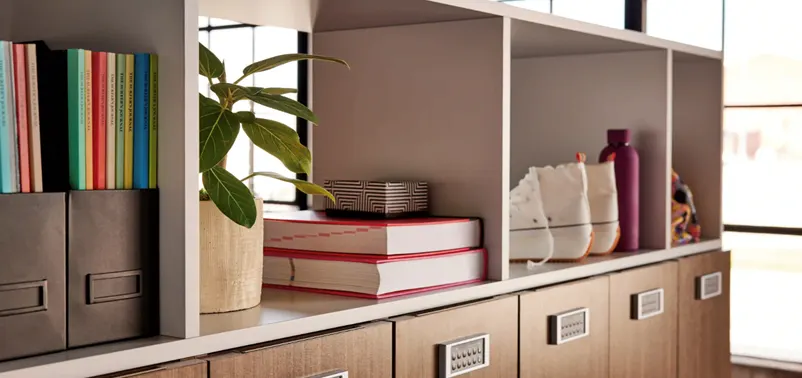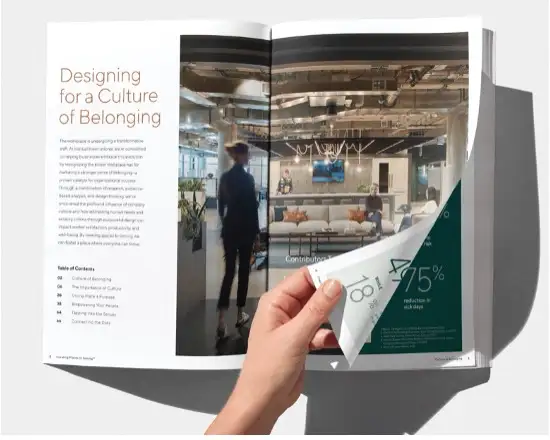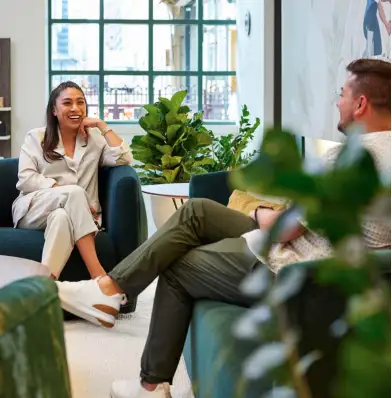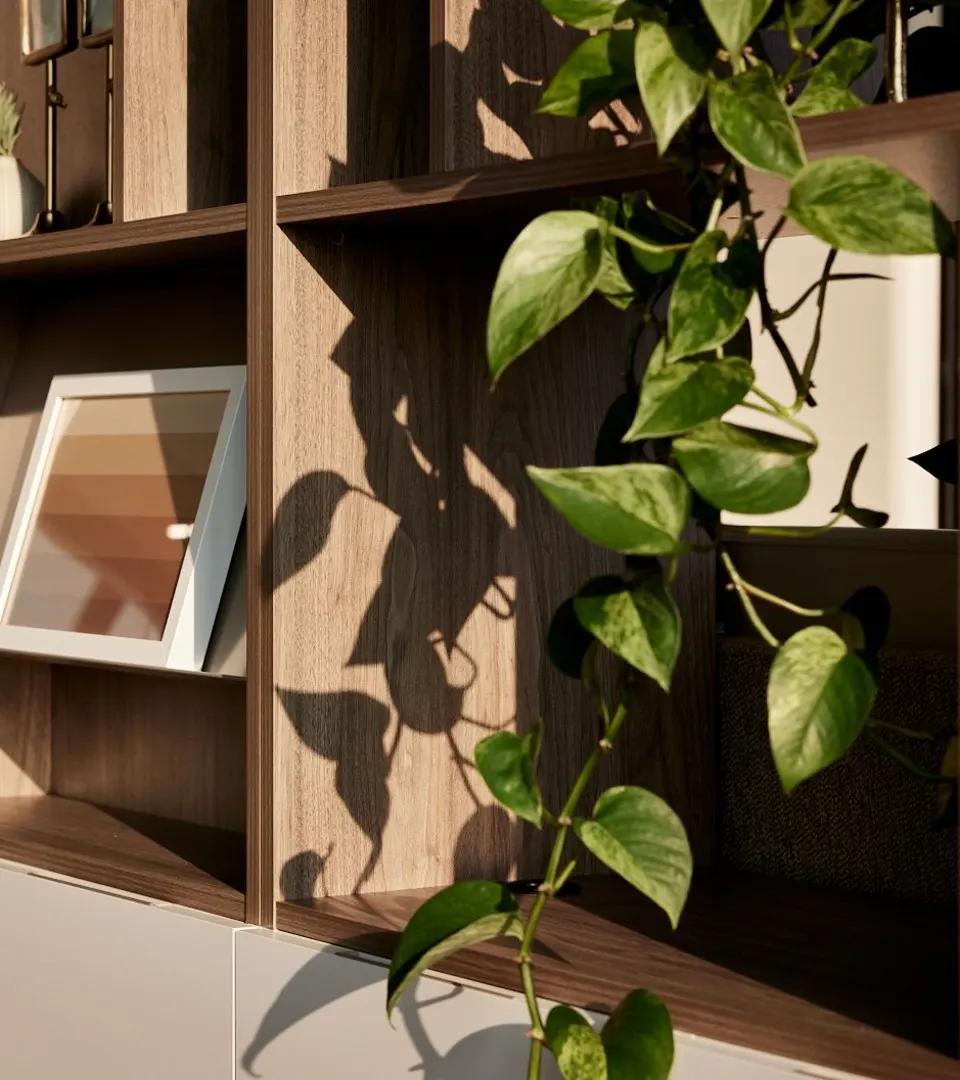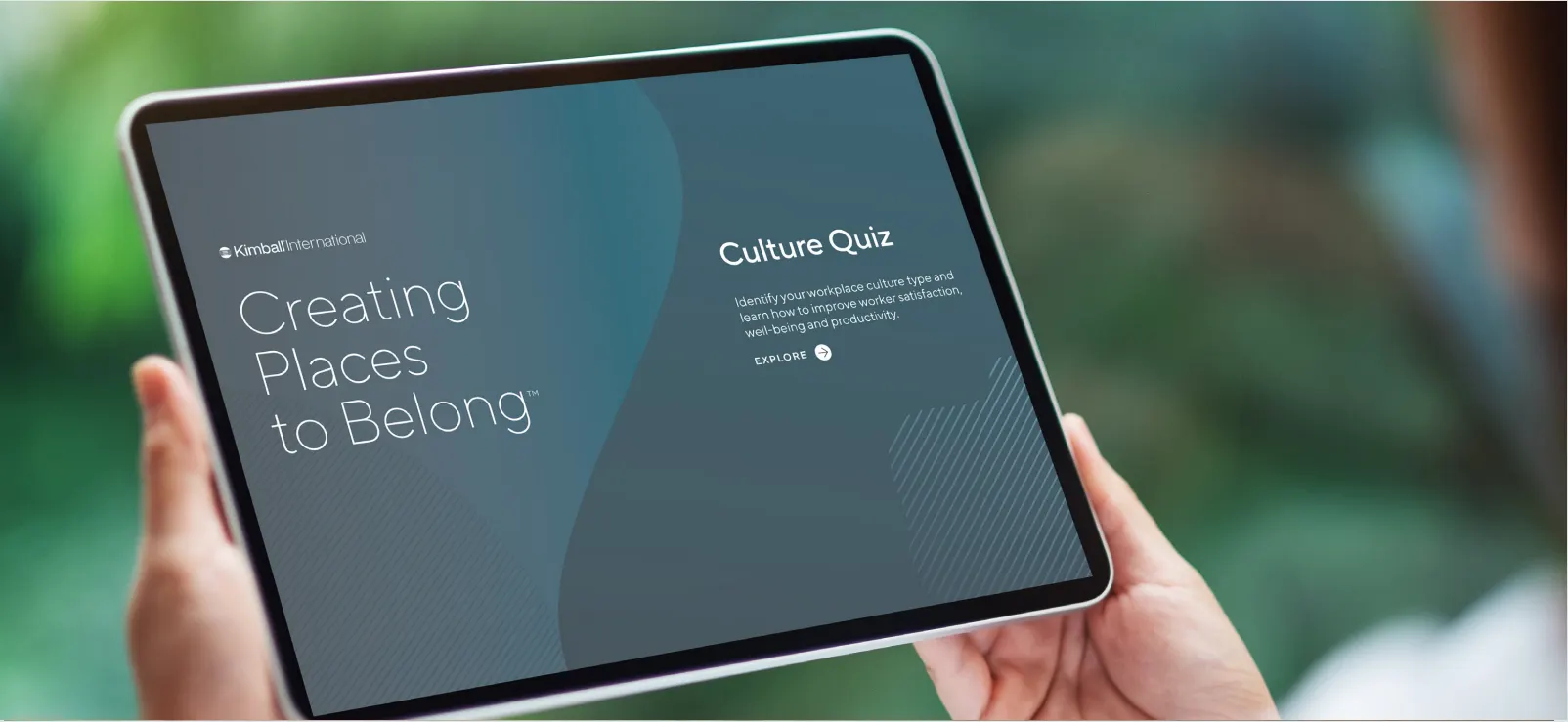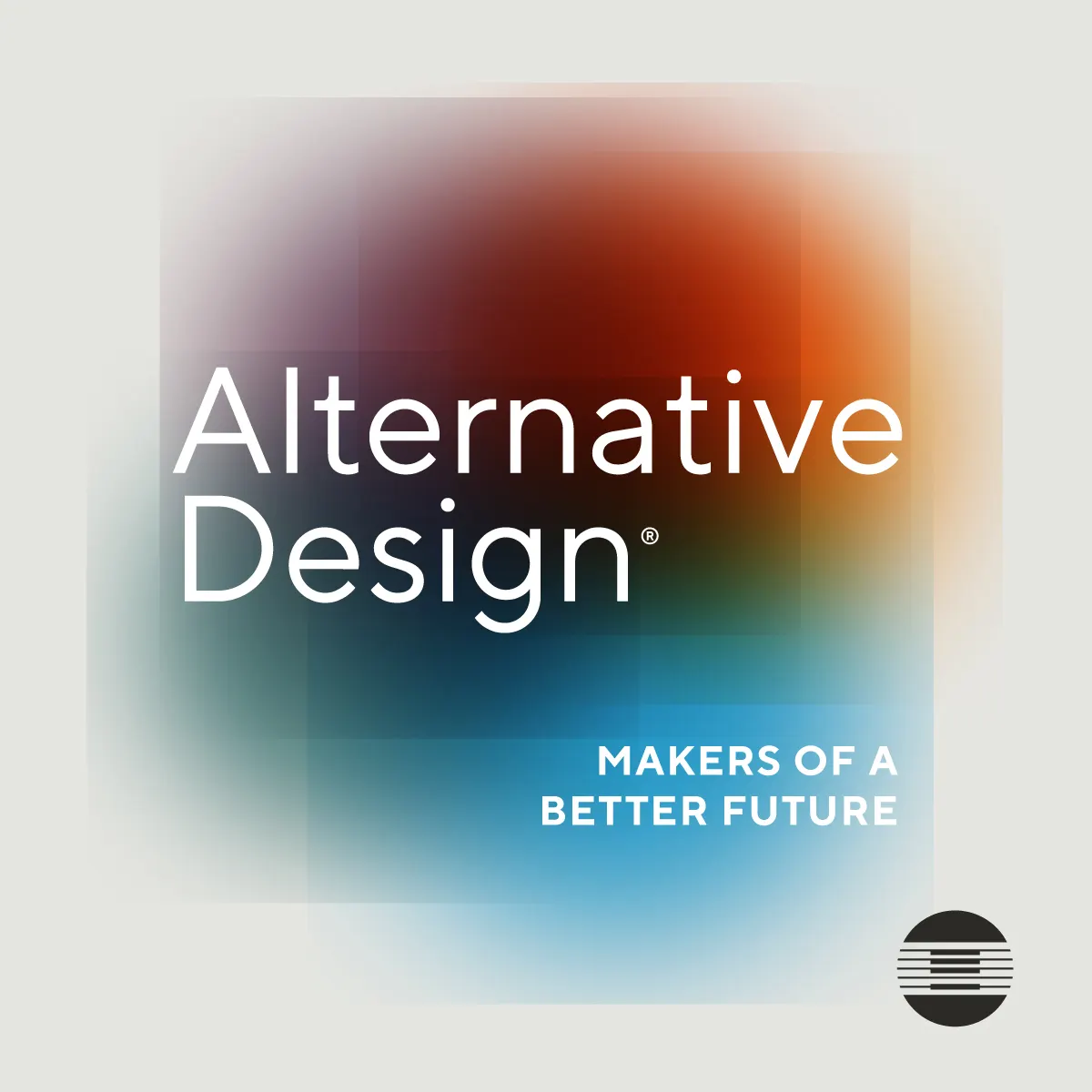A Human-Centered Approach
The workplace impacts well-being, productivity,
and engagement, especially as employees
navigate sensory-rich settings. Sensory design
is crucial yet often neglected. It shapes how we
interact with our surroundings and form social
bonds.
Individual sensory responses affect how we feel
and perform at work. It's important to
acknowledge the varied ways people process
sensory inputs to create workspaces that
promote productivity and well-being,
addressing distinct needs. By focusing on a
human-centered design, we can select factors
like sound, texture, and visuals with intention to
enhance the workplace experience.
Embracing Neurodiversity
Understanding neurodiversity in sensory responses is key, making it essential to provide diverse workspaces for different preferences and sensitivities. A thoughtfully designed workplace offers various settings to support focus, comfort, and mental well-being, enabling employees to choose spaces that match their needs, fostering inclusivity and a sense of belonging.
Beyond a Single Solution
Our research utilized a sensory profile scale assessing how research participants tend to respond to stimuli such as sound, vision, and touch in their environment.
Sensory Design Considerations
Sensory design components, like atmospheric sound, privacy, lighting, biophilic elements, and ergonomic furnishings enhance workers’ belonging when tailored to personal preferences. Choices in color and intensity can make a space feel more welcoming or creatively stimulating, impacting mood and productivity.
